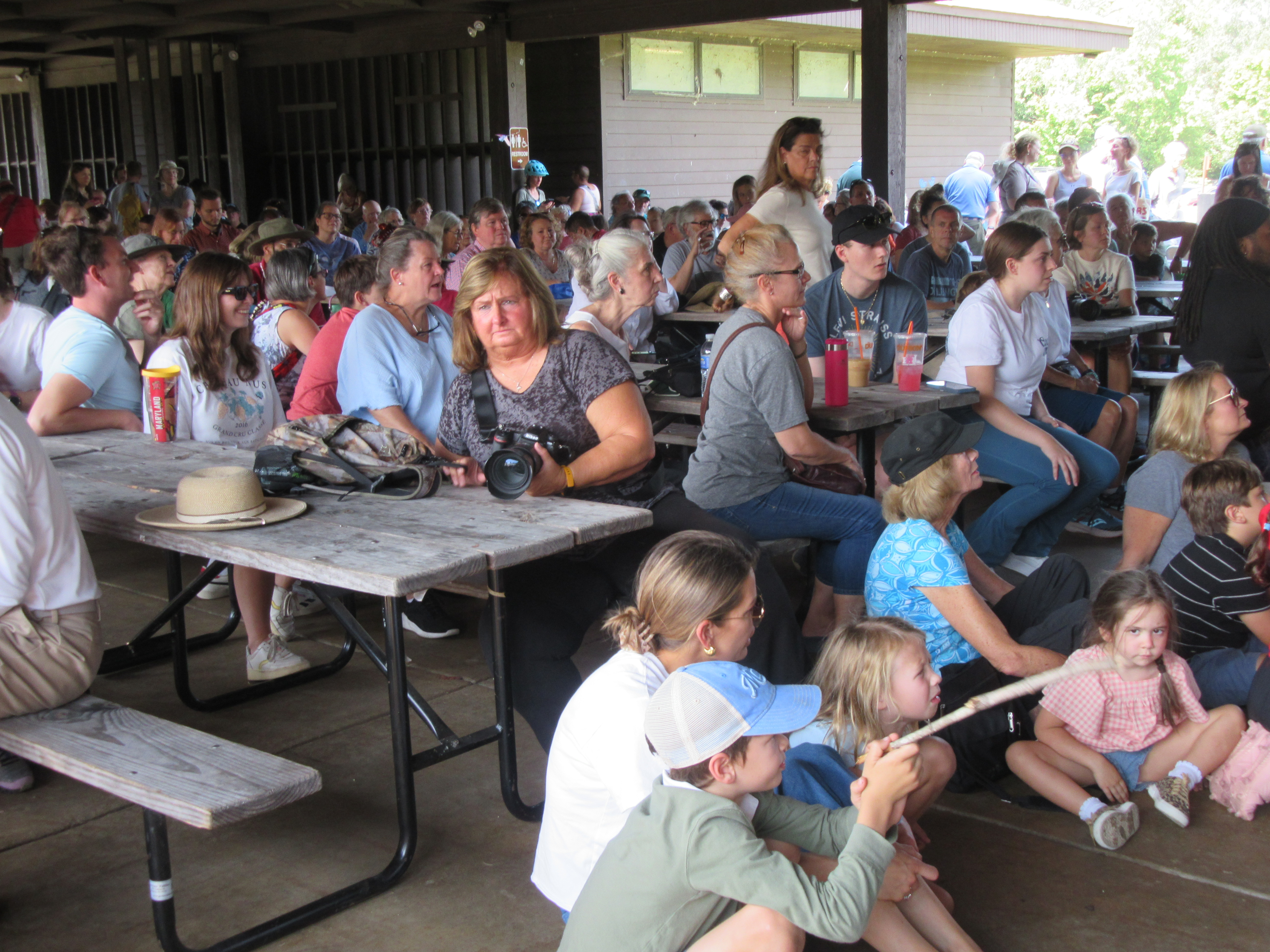Their eyes were piercing, their beaks razor sharp, their talons intimidating and their plumage intricately patterned. Even the owls’ regurgitated pellets excited the crowd.
Six different raptor species wowed almost 500 people who filled Pavilion A at Fort Hunt Park on Sept. 14 for “Raptor Rapture.”
Raptors, also called birds of prey, have keen eyesight and hearing, sharp talons and a hooked beak. “Most are large birds, but they come in all sizes,” explained Liz Dennison, President of Secret Garden Birds and Bees. For over two hours, she and three colleagues introduced people to six birds.
Dennison and her husband, Tim, have seven raptors that have what some might dub a “life of Riley.” They occupy specially-built enclosures with room to fly, fresh air, sunlight, rain, perches, a hide box, a bathing pool and meals brought in. The raptors also have toys, newspapers to shred and stuffed animals.
All but one of the birds, a barn owl, came from wildlife rehabilitators. All are permanently disabled from an injury that prevents them from surviving in the wild. The barn owl, named Olive, is captive bred.
First in the line-up was Pippin, an American kestrel sporting two distinctive black stripes on his face. Pippin was found begging people for food which indicated that the bird had imprinted on humans. “His long skinny toes are perfect for catching prey,” Liz said. “He looks like an adorable, sweet bird, but he is every bit a fierce bird of prey,” she explained.
Little Red, a red-shouldered hawk, was blind in one eye, likely from a great horned owl attack. Scarlett, a barred owl, “will eat anything she can catch, like mice, squirrels, bats and other animals,” Liz said. Her fans guessed that Scarlett weighs around five to seven pounds, but Liz clarified, “She only weighs one and a half pounds. She is very fluffy.”
Hodor, an imposing great horned owl, glared at the crowd with his large yellow eyes. At three-and-a half pounds, he was the largest bird at the event. His head tufts are not horns or ears, Liz offered, but are called “plumicorns,” adding, “He really likes to eat skunks.”
Little Voss, a grayish eastern screech owl around 10 inches tall, is especially adept at camouflaging and resembling tree bark. “He may be cute, but he too is a fierce bird of prey,” Liz commented.
Finally, out came Olive, a real charmer with a white, heart-shaped face. Barn owls are “natural pest control,” Liz remarked, farmers’ favorites because they can eat up to 10,000 mice a year.
Fawning Fans
Harry and Laura Juricic who live in Belle Haven brought their granddaughter, Lucia, and three of Lucia’s friends. One friend, Aila, said the barn owl was her favorite. Dahlia Bober, a Tauxemont teen, found the birds to be “really cool.” Her dad, Mike said, “Connecting with the natural world is a great thing.”
Why do the Dennisons take care of seven raptors? “Most of us do this work because we care about wildlife and preserving a healthy ecosystem in our increasingly human world. Meeting these birds up close and getting to know them, not as beings separate from us, but as our wild neighbors sharing our communities, helps increase understanding and compassion for wildlife and reduces fear. We hope that these programs inspire people to create an environment where all living things can thrive.”
Speaking of inspiration, back to regurgitations. Owls often eat their prey whole and throw up a pellet of bones, fur and feathers that they cannot digest. Many youngsters were very inspired, in fact delighted, to dissect owl pellets and study the contents.
It was raptor rapture all around.
Sponsors of the event were the Friends of Dyke Marsh, the National Park Service and Secret Gardens Birds and Bees.
Information
www.SecretGardenBirdsAndBees.com

